
29 minute read
Pots and pans tell a story

Preeti Mehra
Advertisement
Let your cookware speak the language of health.

Essential to a truly healthy and green kitchen is not only the food you cook, but the cookware used for cooking it. There are several aspects of kitchen operations that even the best of cooks often ignore. Do the utensils used safeguard your health? Do they leach harmful chemicals or heavy metals into the food? Are your pots and pans made of eco-friendly material which can be easily recycled?
The various materials used in the manufacture of kitchenware come with their share of plusses and minuses. Some are better than the others. Still others are not desirable when cooking particular types of food. Till very recently there was very little focus on the use of cookware but of late there is growing realisation that one must choose from the different kinds of cookware that are widely advertised and available in the market.
Eco-friendly material covers a large spectrum. Here we will be talking about those containers and vessels that can last long, be reused, refurbished and recycled, so that they can stay out of the landfill for the longest period. In the kitchen we have two kinds of containers — the ones we cook in and the ones in which we store the food. And then of course the vital accessories like ladles, spoons, straws and tea strainers.
Let’s start with cooking containers. Of course, the safest ones are those that leach the least chemicals and heavy metals. Experts recommend brands that are constructed of ceramic-coated aluminium with stainless steel handles. Let’s see what they say on how each material reacts to heat.
Cast iron vessels are among the most durable. Though they leach iron into the food, it is considered safe by experts. One option worth keeping in your kitchen is enamel or glass-coated cast iron vessels. It has all the qualities of cast iron cookware but does not leach iron into your food. Moreover, it works well for cooking acidic food because of the coating.
Stainless steel utensils are very popular in Indian kitchens since they are affordable, durable, light and easily washable. The good news is that they are relatively safe but before buying stainless steel it is worth enquiring from the dealer about the proportion of chromium and nickel in the product. Some brands have this information embossed on the surface. As a thumb rule, cookware with 18/8 or 18/10 is regarded “food-safe” since they are unlikely to leach into the food. These proportions indicate the chromium and nickel content in the product. Thus 18/8 stainless steel indicates it has 18 per cent chromium and 8 per cent nickel in addition to traces of carbon and iron. Stainless steel, it must be noted, is durable and can be recycled.
Glass cookware is non-toxic and safe. It is strongly recommended, particularly as bakeware. But opinions are divided on use of glass vessels over the stove. Of course, some brands are advertised as being safe enough to be used on any heat source be it the cooking range or an oven. However, the feedback from those who work in the kitchen is that glass vessels can be
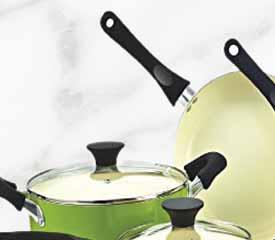
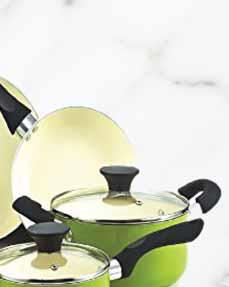
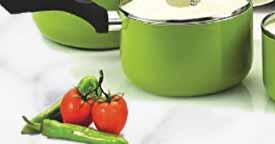




used for specialised dishes only. They feel that they cannot endure sustained heat or sudden changes in temperature. On the plus side, glass is almost 100 per cent recyclable and great for storing food.
Copper vessels with stainless steel inner lining are also a good option. If the coating is either 18/8 or 18/10 stainless steel, it won’t leach into the food. And copper’s quick-heating properties ensures faster cooking and savings on energy consumption.
If you use non-stick cookware, you must be careful about its polytetrafluoroethylene coating. It is best to use wooden ladles to stir non-stick surfaces. It is always wise to avoid leaving such cookware on the heat for a long time.
There are other green rules that can be followed in the kitchen as well. For instance, it would be great if you get metal straws for family and guests instead of keeping throwaway plastic ones to pop into drinks. Washable recycled cloth kitchen napkins too are much more desirable compared to paper napkins, which are not recyclable and must only be used while travelling.
One of the activities every morning in a typical Indian kitchen is packing food for members of the family who go to work or attend school or college. Using green options for this can reduce your footprint significantly. Mumbai dabbawallas tiffin box is extremely eco-friendly. It would be a great idea to replicate it, if possible. For school children or college going students, who have an aversion to a big lunch box, banana leaves are a great option for wrapping rotis or sandwiches. If foil is their choice of packing, insist that it is brought back and reused. Of course, ensure you buy recycled foil and not the virgin brands for packing your child’s food.
As for children, the need to inculcate green values in them at an early age is the duty of every responsible parent. If that is done, we can ensure a green future for the next generation. Human beings are creatures of habit and only if we change our preferences as well as those of our growing children, will we be able to inhabit an ecofriendly world.



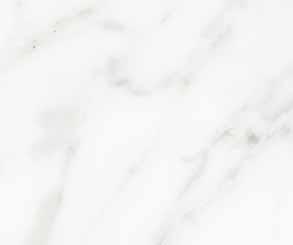
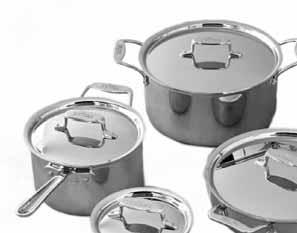
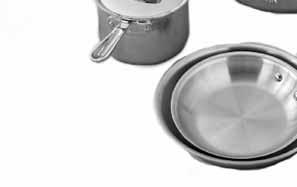
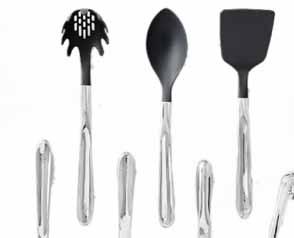
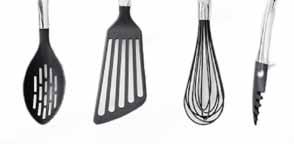
The writer is a senior journalist who writes on environmental issues


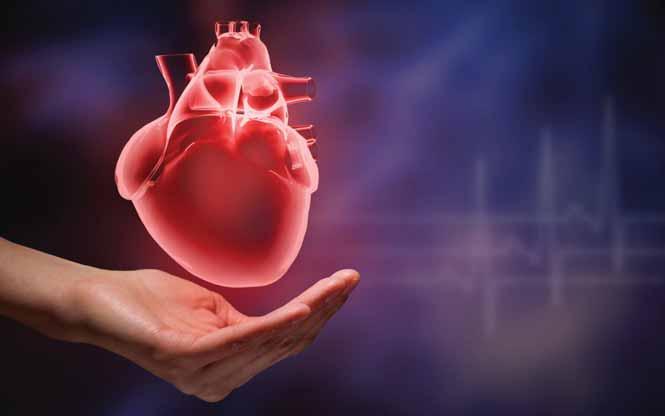
Preventing cardiac arrests
Bharat and Shalan Savur
Years and years ago when we, our friends and the world were much younger, we lost a dear pal when his heart gave way. He’d been suffering from cancer and, probably, his heart couldn’t keep up in a weakened system. For days, we were in denial. The only consolation is that in our mind and the minds of many others who loved him, Raja will always remain young with jet black hair and a moustache that smiled along with his lips and eyes.
Raja was a good person. And so were singer Krishnakumar Kunnath, news reporter Kamal Khan, entrepreneur Pankhuri Shrivastava, and actors Siddharth Shukla and Amit Mishra. According to cardiologist Dr Manjinder Sandhu, in India around 12 lakh youngsters die from cardiac arrest every year. Those in their golden years do too, but about 30 per cent are under 45 years of age. The American Heart Association recommends all 20-year-olds to start taking steps to reduce the chance of getting a heart attack or having a cardiac arrest.
Tell-tale symptoms
Nobody can predict when it can happen. There are small red flags — pain in the chest or arms, breathlessness, profuse sweating, acute uneasiness and fatigue. It’s best to dial your doctor. Keep your fingers crossed that it is just a bout of indigestion, gas, tight clothes, but consult your doctor alongside. Timely medical aid can make a difference. Actor Sunil Grover did and is back at work today.
Apparently, the two heart conditions are not the same. A heart attack occurs when the blood flow to the heart gets blocked. A cardiac arrest occurs when the heart goes through an electrical disturbance due to an imbalance between channels of sodium, potassium and calcium and just stops beating due to the malfunctioning. Tip: If you are a regular exerciser and get a twitch on your arm that doesn’t stop, check with your doctor. You may need calcium tablets. Don’t neglect it.
As a society, we need to take care of our health and our emotional well-being too. If a person suffers a cardiac arrest and timely, proper action is taken, such as administering an electric shock, the patient’s life can be saved. And when the person survives the heart episode, it is important that when he or she is non-productive or less productive for a certain time span, society should never make him or her feel worthless. Loneliness, helplessness, isolation and feeling useless are not friends of the heart.
Heart-friendly choices
Overall, we need to make lifestyle choices as well as emotional choices that are heart-friendly and life-enhancing. Being physically active is the key to a happy heart. When the body is fit, the heart needs to work slower. Dr Deepak Chopra’s resting heart rate at age 74 is 65 beats per minute — a rate that a
fit 30-year-old would be proud of. He does yoga daily. Even if you don’t have time to go through a structured exercise regime, just find ways to be active. Walk more, drive less. Use the stairs. Don’t lower your activities to the level of your stamina. Rather, gradually, gently raise your stamina to the level of increased activity. Tip: Stand up and pace the room while talking on your cellphone.
Eat, don’t be eaten
Eat your food, don’t let your food eat you. Fresh vegetables, fruits and greens are great. Choose pulses for proteins — sprouted moong eaten raw or cooked makes amino acids more available to the body. Chickpeas are super too — they can even be just soaked and pressure-cooked with a bit of salt to make a delicious snack. If inclined, add chopped tomatoes, onions and the sweet-and-sour bhel chutney. Garnish with coriander leaves but avoid fried sev. In fact, avoid fried anything. Nuts and seeds are good too. If you powder them and make a mix, you can add 1–2 teaspoons to your katori of curd. Caution: Nuts and seeds can be heavy, so watch your overall intake. At meal times, stop when you’re satisfied. Also, if you are allergic to any food, avoid it even if it makes it to the top of the superfoods chart. Eat rice, daliya, paratha or bread according to your preferences.
Invite well-being
Meditation opens a pathway to a greater awareness of yourself, a charted route to
The open-hearted asana
All that we’ve discussed above points to strengthening and opening our heart. One yoga teacher points out that our very posture of sitting at our desks is of a semi-slouch. It constricts our chest, heart and our lungs. She advocates a wonderful practice to be done five times a day. Stand up, spread your arms out wide and laugh. Let the air and oxygen and the joy of being alive rush into your lungs. If you don’t want to disturb anybody, stand in that open-hearted posture under the fan and breathe like one who has reached the mountain peak and is gazing in deep delight at the view. It’s very refreshing. It drives out all the kinks, the tensions we don’t even know we have accumulated.
Finally, while technology is a great aid and source of entertainment, do de-tech to detox. Let your eyes feast on the vast true life scenery of epic proportions outside your window or at a scenic retreat in the hills. Walk barefoot on the beach so that the earth’s negative ions enter your body and dispel the free radicals that build up there due to daily stress; allow these negative ions to act positively and decrease the stress-caused inflammation.
Give your heart a good life, starting now.
Our very posture of sitting at our desks is of a semi-slouch.
It constricts our chest and
heart as well as our lungs
As long as you don’t forgive, who and whatever it is will occupy rent-free space in your mind.
a sense of quiet well-being. It relaxes body and mind, reduces the blood pressure level and even calms your emotional reactivity, thus, shrinking your stress response to a tolerable degree. I recommend doing the guided Yoga Nidra meditation session, several of which are available on Youtube. To meditate is to be your natural, greater self.
Preventing heartache
It is the greater self that helps us decide when not to expect, assume or demand and save us a lot of unnecessary heartache. It is not that we become fearful, but more discerning. Expecting, assuming, demanding lead to a bristling anger and arrogance that impose huge maintenance costs on our temperament and heart. Today’s emphasis on getting answers fast reduces the windows to patience, moderation, acceptance which can be self-maintained without any cost. As writer Isabelle Holland reminds us, ‘As long as you don’t forgive, who and whatever it is will occupy rent-free space in your mind.’
Listen to these warnings too: ‘Emotional distress can cause a stress response in the body leading to increases in blood pressure and inflammation. Certain tendencies such as anger and hostility have been related to elevated risks of heart disease,’ says Dr Deepak Chopra. Resolve not to get all mentally het up and inflamed. Cars do not start, payments do not arrive on time, harsh words are targeted at us, the weather pours cold water on our plans… the thing is not to add the slam of our anger, hostility and intolerance to an already grievous situation. Douglas Abrams who has a long association with greats such as Archbishop Tutu, the Dalai Lama and others, talks about ‘…eudemonic happiness which is characterised by self-understanding, meaning, growth and acceptance, including life’s inevitable suffering, sadness and grief.’ The writers are authors of Fitness for Life and Simply Spiritual – You Are Naturally Divine and teachers of the Fitness for Life programme.
Wordsworld

Behind the cover

Sandhya Rao
Surprises hide within the pages of seemingly unattractive looking books. Don’t be fooled. Go beyond the jacket.

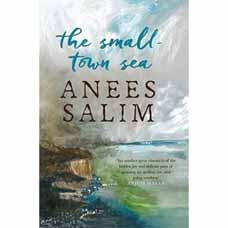

We are constantly admonished never to judge a book by its cover, yet I often catch myself doing precisely that. Mmmm, too dull. Uff, so boring. Naa, not interesting. Oho, so unsmart, the book must be even less smart. These and a whole lot of other similarly illogical thoughts present themselves when choosing books, be it at library or shop.
I remember being less picky as a child because all I wanted to do was read, ‘looks’ didn’t matter. But yes, I preferred fat books to thin ones because they held the promise of juicy bites. This approach ruled well for a long time, right through a period of irritating intellectual snobbery. Thankfully, that stage saw a decline and gradually gave way to the habit of looking inside the book, quickly perusing the first few paragraphs — but not the last! — to see if the introduction to the novel held my attention. And of course, the size of the font used for the text mattered too: if it made my eyes scrunch up to read, then the book was set aside, oftentimes, regretfully. The text needed to be easy on the eye, large enough and with sufficient space between the lines. Incidentally, they call this space between lines ‘leading’ in publishing parlance. Font size and leading are sometimes compromised in order to reduce the number of pages and so bring down the price of a book.
The other thing that is bothersome is the kind of paper used for the text: sometimes it is so thin that the printing on one side is seen on the other, making it a hodgepodge to read. This is particularly true of textbooks and definitely one reason why so many children put off books. Just as we refer to transparent clothes as ‘seethrough’, the effect of such printing is referred to as ‘show-through’.
Anyway, these sidebars aside, for the potential reader, it’s a balancing act between the outside and the inside, with the inside carrying the deciding vote. Judged by these standards, the front cover of Tales from a Vending Machine wouldn’t win prizes for design, but that lacuna is more than made up for by the author who has a number of awards ratcheted up against his books. The curious fact is that Kochi-based Anees Salim had written two books prior to this one: agents and publishers had rejected both of them. In order to get over his dejection, he decided to write something light and racy. That’s what he says in a 2018 interview to the Earthen Lamp Journal: ‘The deeper the wound, the bigger the dose of writing.’ This was his coping mechanism, his therapy to combat depression.
It turned out to be the perfect antidote because, as he himself says, Salim wrote this book in less than six months, found an agent in five minutes, who then sold it to a publisher in a week’s time. And although he says he will never write another commercial book, this one proved to be his ‘luck by chance’ because thereafter, publishers lined up to add his book to their lists and his career as a writer blossomed. If you want to know how: Vanity Bagh received The Hindu Literary Prize in 2014, The

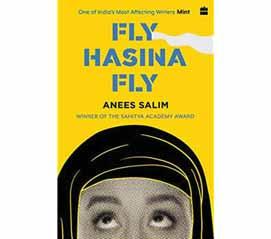
Blind Lady’s Descendants won the 2015 Crossword Book Award and the Sahitya Akademi award in 2018, The Small-Town Sea was judged best fiction at the 2017 Bangalore Atta Galatta Litfest and won the Tata Literature Live Book of the Year Award. His latest, published in 2021, is The Odd Book of Baby Names. Vending Machine won its share of fame by being republished as Fly, Hasina, Fly, new cover and all!
Vending Machine is a darkly humorous novel woven around the character of Hasina Mansoor who works as a vending machine attendant at the departure lounge of the airport. She lives with her parents, twin sister, and little brother. Caught up in the dynamics of family relationships, Hasina is secretly in love with her cousin who lives upstairs, with his family. She is a peculiar character: you neither love her nor hate her nor do you understand her. But she sometimes makes you laugh out loud by the sheer ludicrousness of her observations and actions. Dig deep beneath the fluff and you hit a hard rock of hopelessness that underlines Hasina’s life, but she herself has only a vague awareness of it.
Unpretentious, unambiguous, there’s no real plot to Hasina’s story, yet you flit with her as she watches flights land and take-off, from fantasy to reality to daydream to humdrum until you are arrested by the ridiculous. As, for instance, when she is once approached by ‘a white-haired man dressed in a long kurta… he looked so sad and uprooted and — you won’t believe me — was barefoot’. Your grey cells begin to engage at this stage. Overwhelmed by pity she tells him ‘in a polite and lowered voice, because my nice little heart bled at the sight of people whose faces were so evidently marked by the scars of penury. “Tea is forty rupees here. Inside the plane it is free.” … “You know who I am?” he asked, as if he had had a loss of memory and was not really sure of what he was doing in an airport lounge sans footwear… “I am a painter.”’ By now you think you know who she is talking about.
Hasina’s voice goes on: ‘So, my guess was close. (Of late, there had been a steady parade of people like him to Dubai, where they were building the tallest structure in the world.) … I had a vision of him standing on a rope ladder draped over a large building, clutching a rung with one hand, running a paintbrush over the wall with the other while a cruel wind tried its best to send him flying to the ground.’ You do know! It’s M F Husain!
Take another instance, this time involving Saddam Hussein: ‘They showed the hanging all day, the same short footage over and over again; for a while I was under the impression that every time they hung him he refused to die and went defiantly back to the gallows and challenged them to hang him again.’ She feels sorry for him and sticks his picture above her bed and scrawls beneath it: ‘I am young and I have a dream.’ When her sister Shamla points out that Saddam never said anything like this, Hasina ‘was so saddened by the hanging that I wanted to associate all good sayings with poor Saddam. “He said that just before Iraq attacked Kuwait.
I read that in Femina.”’ Shamla claims Rajiv Gandhi said this when Indira Gandhi died. Anyway, ‘The next day, I went to the Internet café outside the airport and searched in Google for the man who claimed to be young and have the same dream every night. We were both wrong … Those words were spoken by an American king named Martin Luther who died not very long after he had talked in public about his youth and the dream he had at night.’
Politically incorrect, darkly funny, politically and socially satiric yet grounded in harsh realities… all these layers combine to offer readers a healthy dose of perspective on life and how we live. It’s a shot of perspective we could all do with in these polarising times.





The columnist is a children’s writer and senior journalist


RC Pondicherry White Town — RID 2981 RC Malegaon Fort — RID 3030
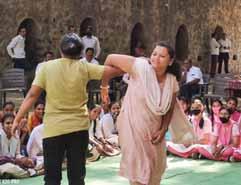

Club president
Vaitheeswaran presented a cheque for `22,000 to children,
Jeniliya and
Jeslin, for their school fees. A karate camp was held at the Kakani Kanya Vidyalaya, Mohadi near Nashik. Club president Dr Arun Pathade spoke on the importance of self-defence for girls.
RC Madurai Midtown — RID 3000 RC Indore Greater — RID 3040

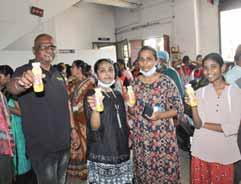
An industrial visit to Ruby Foods was arranged for club members and
Annets who had a first-hand glimpse of the enterprise. DG Col Mahendra Mishra inaugurated a two-day artificial limb fitment camp that benefitted 21 amputees. This was held in partnership with Inali Foundation, Pune.
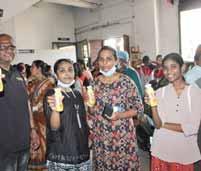
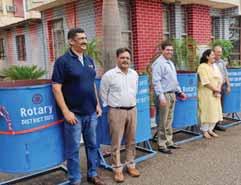
DG M Rama Rao inaugurated a digital library funded by
AG Jagapathi
Raju at Kranthi
Nagar in the city. Dustbins were distributed to Sainik School, and Government Girls HR School, both in Nagrota, in the presence of DGE Dr Dushyant Chaudhary.
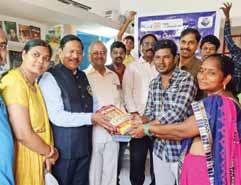
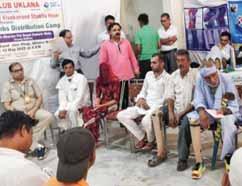
Artificial limbs were fitted to 10 amputees in partnership with Bharat
Vikas Parishad at a cost of `30,000. School bags, notebooks and stationery kits were distributed to students whose parents are daily wagers at a brick kiln.
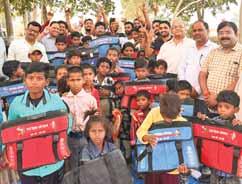
RC Meerut Umang — RID 3100 RC Lonavala — RID 3131
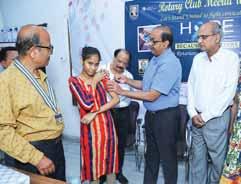
A vaccination camp against cervical cancer was held at the Vardhaman Academy in the presence of DG Rajiv
Singhal and CMO
Akhilesh Mohan. Two selfie points were installed at scenic spots with Rotary and club logos on selfie boards as part of public image building initiatives.
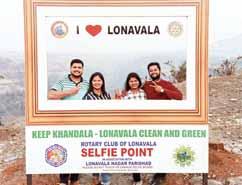
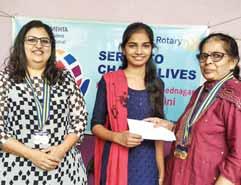

An awareness drive against tobacco consumption was done at the Paliwal Park to mark World No Tobacco Day. The district administration was requested to make the park a tobacco-free zone. The club sponsored `20,000 for a young girl from a less privileged family to pursue a two-year stenography course that will help her get better job offers.
RC Thane Down Town — RID 3142 RC Bangalore South — RID 3190
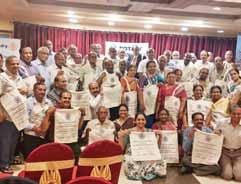
DG Dr Mayuresh Warke inaugurated three classrooms at the Ashramshala school in Lokseva Foundation Trust, Valivare village in Murbad taluk, thanks to the CSR funds (`20 lakh) from Zuventus Healthcare. Senior Citizens Sangha, sponsored by the club, has distributed 4,000 eco-friendly cloth bags carrying Rotary’s Four-Way Test and seven focus areas as part of its public image initiatives.
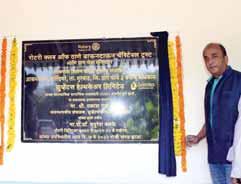
RC Guntur Vikas — RID 3150 RC Cochin Beachside — RID 3201
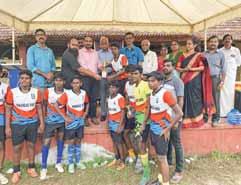
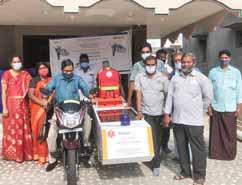
A motorcycle ambulance worth `1.8 lakh was donated to Covid frontline warriors in Guntur to continue their efforts in preventing the spread of the pandemic. A football tournament was conducted and prizes were distributed to VHS Pananghad, the winners, with the support of RCC.
RC Honavar — D 3170 RC Alleppey Greater — RID 3211
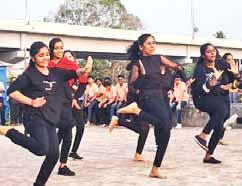
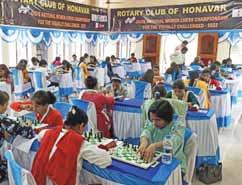
A National Women’s
Chess Championship for the VisuallyChallenged was conducted with the support of All India Chess Federation for Blind. Around 60 players participated. The club staged a flash mob in the town and on the beach involving 250 school students with the message ‘Say no to war’.
RC Tirunelveli Suburbs — RID 3212 RC Bilaspur Queens — RID 3261
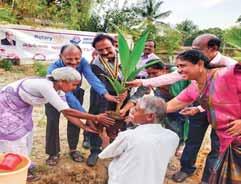
A sapling plantation drive was conducted at the Doordarshan office in Rameswaram in the presence of club president Muralidharan, secretary TV
Suresh and other members. A drawing competition was held for children in a slum colony to create awareness on World No Tobacco Day.
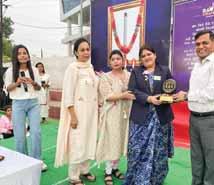
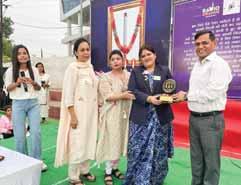
RC Orchid City Shillong — RID 3240 RC Bhubaneswar Flamingo — RID 3262
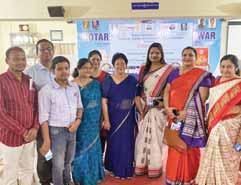
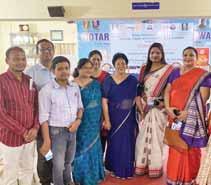
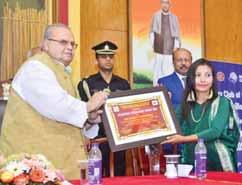
Meghalaya Governor
Satyapal Malik presented Vocational Excellence Awards hosted by the club at the Durbar Hall of the
Raj Bhavan. A webinar, Embrace, on transgender issues was held with LGBTQ resource persons in the presence of Dr Smita Sinha, club president and district DEI chair.
RC Bokaro Midtown Couples — RID 3250 RC Calcutta West Ridge — RID 3291
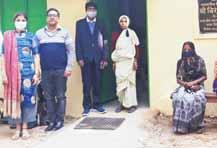
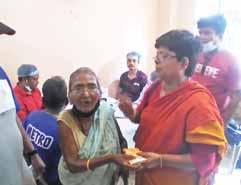
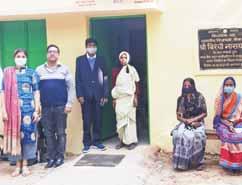
An eye clinic was opened at the Abha
Seva Sadan,
Kashi Jharia, for the residents of Pindrajora and nearby villages. Spectacles were distributed. Ten patients were identified for cataract surgery at an eye camp held along with RC Calcutta Mahanagar.




Tighten rules for snappier games
TCA Srinivasa Raghavan
When the French Open ended this year someone asked me if I had watched the matches. I said no because I think the French Open, which is played on clay, is more a test of endurance than tennis skills. Opinions vary on this but I also think the bigger culprit, or indeed the main one, is the obsession with rulemaking in the western countries. They want to make more and more rules for everything. By and large, I must say, these rules have been good.
But in the area of sports they have tended to make different games very boring and predictable. It doesn’t matter which game, cricket or hockey or tennis or football or whatever, over the last half century rules made by the West have had a deadening impact. As a result I now watch fewer tournaments, not least because there are so many of them. At first I thought the problem was me because I do love watching sporting contests. But gradually I realised that, for once, it wasn’t I who had a problem. It was the straitjacketed rules that have taken the fun out of the sport.
Let me just focus on the problem of too many rules. Because of the paucity of space I will discuss only cricket and tennis, the two sports that I love the most. For the other sports you can do a similar exercise and you will see how the rules limit the level of contest. These rules have reduced these sports to a zombielike state.
Take cricket first. Until the end of the 1970s, there were very few rules that governed mainly the bowlers. These rules were for a no ball, a wide and LBW. As a result, the contests used to be more intense. Then gradually more rules were introduced. These were tiny changes — I won’t bore you with the details — that had the effect of making the bat-ball contest uneven. The game became increasingly batting oriented because people like to watch the bowlers getting hammered. The moving force was TV. As the English batsman WG Grace is supposed to have told the bowler who got him out “They have come to see me bat, not to see you bowl.” He refused to leave the field. That was over a 100 years ago. To cut a long story short, let me just tell you how long the shortest rule book is — more than 200 pages. You can find it here. https://www. lords.org/mcc/the-laws-of-cricket/ players-conduct.
The same thing has happened to tennis also. All sorts of limiting features have been introduced that have made the game mind-numbingly monotonous. The French Open is the daddy of all such monotony. Tennis used to be a fast-paced peer game. Now it’s a slow-paced power game because not only are the balls a little larger, the quality of the felt is also different. At Wimbledon they mow the grass differently. The rackets are larger and much lighter, but aren’t able to fully nullify the effect of larger balls, different felt, heavier clay and lawn restrictions. The US and Australian Open are only slightly better because the surfaces there offer more to players. For the life of me I can’t understand why all these changes were necessary if the only effect they have had is to dull down the games and make them last longer so that TV channels can rake in more ad revenue.
I have a suggestion therefore. Let’s go back to the sort of rules and conditions we had in the 1960s and 1970s. Let’s see if the games become snappier or not. If not, I will say I am wrong. If yes, everyone will be better off.
I can’t understand why all these changes are necessary if the only effect they have is to dull down the games and make them last longer so that TV channels can rake in more
ad revenue.
Time to renew your subscription
To ensure continuous supply of Rotary News, please renew your annual subscription.
`480 - Print `420 - E-version
Note: Subscription to a Rotary magazine is not by choice but is mandatory. Under RI rules, clubs can be terminated for not subscribing.
Our bank details for online payment: HDFC Bank, Montieth Road, Egmore, Chennai – Rotary News Trust, SB A/c No 50100213133460; IFSC HDFC0003820. Subscriptions can also be made through G-Pay (QR code is given at the bottom).
Share the UTR number, club name, president/
secretary’s name, amount and date of transfer with us at rotarynews@rosaonline.org. Or
WhatsApp to 9840078074. Indicate language preference (English, Hindi or Tamil) alongside member’s name.
Download subscription form at: https:// rotarynewsonline.org/wp-content/uploads/2022/01/
Subscription-Form-22-23.pdf. We will e-mail the form in June to all club presidents and secretaries.
Club officers to advise newly chartered clubs to contact us for subscription. Club officers should update Rotary News regularly on changes in club membership or postal address of members, to ensure smooth and seamless supply. Names of all members with complete postal address including PIN code, mobile number and email ID must be attached with the form, and DD/ cheque. Individual members please ensure your name is included in your club’s subscription list, to get your copy regularly. If there are postal glitches/delays in your area, clubs can opt for bulk dispatch. Please contact us.
Rotary Club of ......................................... RI District ................... Name of the President/Secretary ................................................... Address .....................................................................................
............................................................................................... City ............... State ................... PIN
Mobile .............................. E-mail ..........................................
Cheque/DD No. ................. Dated ................. for Rs. ................. Drawn on ....................................................................................... in favour of “ROTARY NEWS TRUST” is enclosed.
Date: President/Secretary
Print version e- Version
No. of Copies English Hindi Tamil
For every new member the pro-rata is `40 a month.







